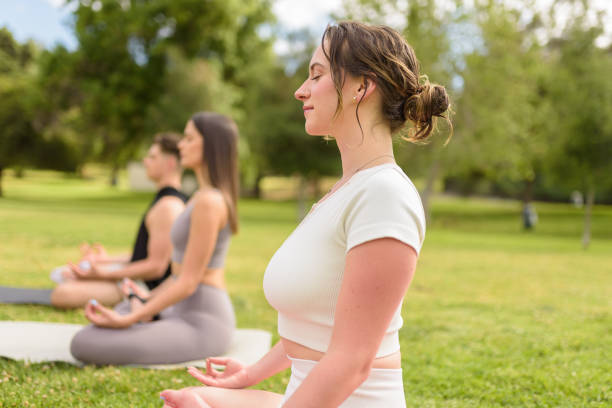Introduction
In today’s fast-paced world, maintaining mental clarity can often feel like a distant goal. With constant distractions, overwhelming responsibilities, and a rapidly changing environment, our minds can become clouded with stress, anxiety, and fatigue. One of the most effective and time-tested ways to regain mental focus and peace is through the practice of meditation. This article dives deep into the best meditation techniques specifically geared toward enhancing mental clarity.
Why Mental Clarity Matters
Mental clarity is the ability to focus, make decisions, and think clearly without being overwhelmed by unnecessary thoughts or emotional baggage. When your mind is clear, you can prioritize better, react calmly to challenges, and maintain emotional stability. It also boosts creativity, productivity, and emotional intelligence.
The Science Behind Meditation and Mental Clarity
Research from neuroscience and psychology has repeatedly shown that meditation physically changes the brain. Studies have found increased grey matter in the prefrontal cortex — responsible for higher-order brain functions like decision-making, concentration, and awareness. Meditation reduces the size and activity of the amygdala, the brain’s center for fear and stress.
Preparing for Meditation
Creating the Right Environment
Before diving into specific meditation techniques, it’s essential to set the right atmosphere. Choose a quiet space where you won’t be disturbed. Use calming elements like candles, incense, or soft instrumental music if they help you relax. The idea is to feel safe, comfortable, and disconnected from external chaos.
Establishing a Routine
Consistency is key. Whether it’s five minutes or an hour, meditating daily enhances results. Pick a time that suits your lifestyle — early mornings often work best for clarity as your mind is not yet cluttered with the day’s events.
Breath Awareness Meditation
How It Works
Breath awareness meditation is one of the simplest and most effective practices for achieving mental clarity. It involves focusing solely on your breath — the inhale and exhale. This practice helps anchor your thoughts and brings your attention back whenever it wanders.
Step-by-Step Guide
- Sit comfortably with your spine straight.
- Close your eyes and take a few deep breaths.
- Focus on the sensation of breath entering and leaving your nostrils.
- When your mind drifts, gently return focus to your breath.
- Continue for 5–20 minutes.
Benefits
- Enhances concentration
- Calms the nervous system
- Reduces intrusive thoughts
- Builds present-moment awareness
Mindfulness Meditation
Understanding Mindfulness
Mindfulness meditation is about observing your thoughts without judgment. Instead of reacting to each thought, you become a passive observer. This detachment creates mental space and clarity.
How to Practice
- Sit or lie down in a quiet space.
- Focus on your breath.
- When thoughts arise, notice them without following or resisting.
- Label them (e.g., “worry,” “planning”) and bring attention back to breath.
- Practice for 10–30 minutes.
Benefits
- Builds self-awareness
- Improves emotional regulation
- Sharpens mental focus
- Enhances stress resilience
Mantra Meditation
What Is a Mantra?
A mantra is a word, sound, or phrase repeated during meditation. It can be spiritual (e.g., “Om”) or personal (e.g., “I am calm”). The repetition helps cut through mental chatter and bring clarity.
How to Do It
- Choose your mantra.
- Sit comfortably and close your eyes.
- Repeat the mantra silently or aloud with each breath.
- If thoughts arise, return to your mantra.
- Continue for 10–20 minutes.
Benefits
- Reduces distractions
- Enhances focus and clarity
- Increases feelings of calm and positivity
Walking Meditation
Moving Toward Clarity
Not all meditation requires sitting still. Walking meditation combines mindfulness with physical movement. It’s ideal for those who struggle with sitting meditation.
How to Practice
- Find a quiet path (indoors or outdoors).
- Walk slowly and focus on each step.
- Notice how your feet lift, move, and touch the ground.
- Align your breath with your steps.
- When distracted, gently return to the rhythm of walking.
Benefits
- Grounds you in the present
- Enhances bodily awareness
- Refreshes both body and mind
Body Scan Meditation
Tuning Into Your Body
Body scan meditation involves mentally scanning yourself from head to toe, observing physical sensations without trying to change them.
How to Do It
- Lie down or sit comfortably.
- Close your eyes and take deep breaths.
- Start at the top of your head and move down slowly.
- Notice sensations, tension, or pain in each area.
- Acknowledge and release any tension.
Benefits
- Promotes deep relaxation
- Releases stored tension
- Improves bodily connection
Visualization Meditation
The Power of Imagination
Visualization involves focusing on a mental image that evokes peace or clarity — like a serene lake, sunrise, or light.
Steps to Practice
- Sit or lie in a quiet space.
- Close your eyes and take deep breaths.
- Visualize a calming scene or light.
- Engage all your senses in the imagery.
- Stay with the image for 10–15 minutes.
Benefits
- Boosts positive emotions
- Enhances creativity
- Clears mental fog
Chakra Meditation
Aligning Energy Centers
Chakra meditation focuses on aligning the seven energy centers of the body. Balanced chakras can improve emotional and mental clarity.
How to Practice
- Sit comfortably and breathe deeply.
- Focus on one chakra at a time, starting from the root.
- Visualize its color and location.
- Use associated mantras (e.g., “Lam” for root chakra).
- Move upward to the crown chakra.
Benefits
- Promotes emotional balance
- Enhances inner peace
- Supports mental clarity
Creating a Sustainable Meditation Habit
Tips for Long-Term Practice
- Start small: Begin with 5 minutes daily.
- Track progress: Use journals or meditation apps.
- Be patient: Don’t expect instant results.
- Stay consistent: Make it a non-negotiable part of your day.
- Join a group: Online or in-person communities can boost motivation.
Overcoming Common Meditation Challenges
- Wandering mind: Gently return focus.
- Impatience: Remind yourself it’s a journey.
- Discomfort: Adjust posture or location.
- Sleepiness: Meditate at a time when you feel alert.
Combining Meditation with Other Wellness Practices
Nutrition and Hydration
What you consume affects mental clarity. Eat brain-boosting foods like leafy greens, berries, and omega-3 rich foods. Stay hydrated.
Exercise and Nature
Physical movement and time in nature complement meditation. A brisk walk or yoga session can enhance the effects of your practice.
Digital Detox and Mindful Living
Limit screen time, especially before and after meditation. Practice mindfulness throughout your day — while eating, walking, or even doing chores.






